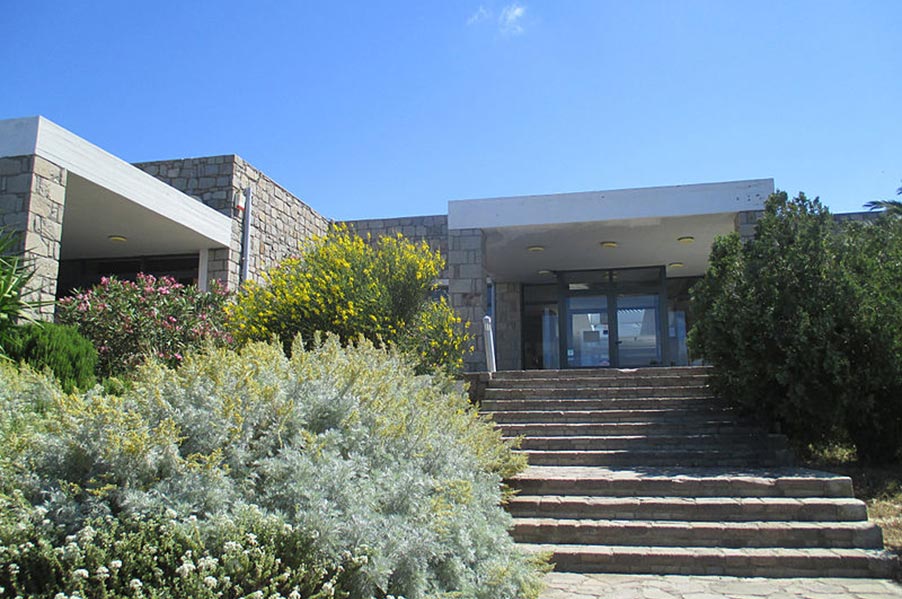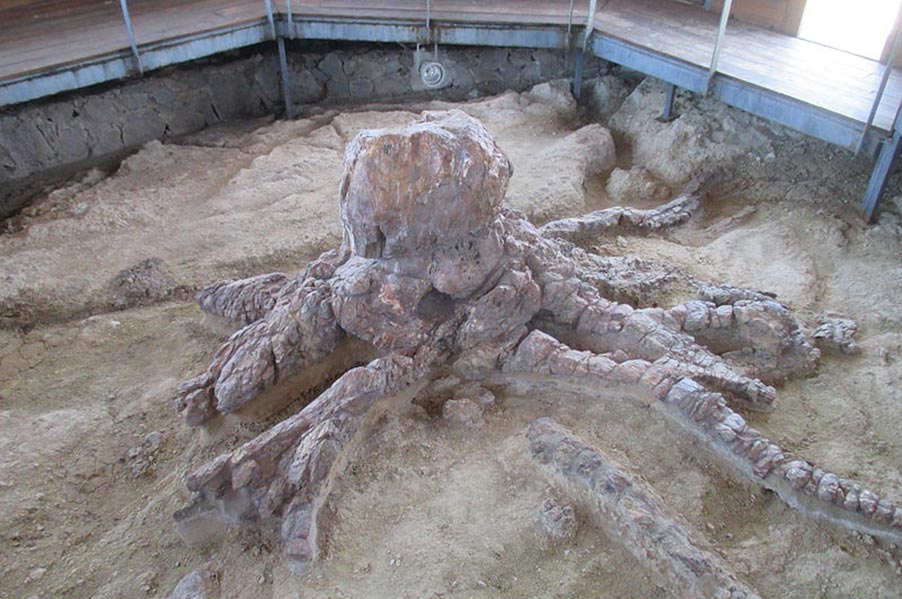- Home
- Lesvos
- Lesvos Entries
- Natural History Museum of the Petrified Forest of Lesvos
Description
The Natural History Museum of the Petrified Forest of Lesvos is situated in Sigri in the extreme west of the island. It is a contemporary 21st century museum that provides visitors with information and a wide range of top quality services. The Museum has the most complete collection of fossilized plants in Greece and now, for the first time, offers a complete presentation of all the unique fossils brought to light by the on going excavations in Western Lesvos. The Museum also gives information on the geological processes that led to the creation of the Petrified Forest and the formation of the broader area of Greece.
The first section of the Petrified Forest Hall exhibition begins with the appearance of the planet’s first single cell organisms 3.5 billion years ago and follows through to developed plant life and the creation of the Petrified Forest.
The second section contains fascinating fossil remains of over 40 different species found and identified in the broader area of western Lesvos are presented. Petrified trunks, branches, twigs, impressive petrified leaves, leaf imprints, fruit and roots are displayed in front of large-sized pictorial depictions of the plants they represent. Palm, cinnamon, laurel, lime, beech, yew, cypress and sequoia are just some of the species presented in this exhibition.
Visitors can also visit field sites via huge screens and watch segments of research work in the Petrified Forest.
The third section is dedicated to the marine part of the Petrified Forest. On display are impressive petrified trunks which, following their retrieval from the marine region of the western Lesvos park, have been preserved and aesthetically reconstructed.
The fourth section is composed of characteristic fossilized plants from other important fossil bearing sites in Greece (Kymi and Aliveri on Evia Island, Vegora, Elassona, Santorini, and Halkidiki).
The fifth section contains the first proof of the existence of animals which lived in the Petrified Forest, such as the fossil jawbone of a dinothere (Predinotherium bavaricum), a trunked ancestor of the elephant from the region of Gavatha, Antissa dating back 20 million years. This find constitutes one of the oldest fossils of a vertebrate in Greece and is particularly rare in Europe. This fossil is the first positive proof of the simultaneous existence of this rare species in Africa and Europe.
A special display case holds an exhibit donated to the museum by the Ecumenical Patriarch Vartholomaios I in June 2001. On display are the branches and leaves of plants from Agia Paraskevi in Halkidiki which have been preserved through the phenomenon of calcification.
The exhibit concludes with a presentation on Theophrastus who was born on Lesvos. Theophrastus was a philosopher and student of Aristotle and is considered the father of mineralogy, botany and ecology. His works “about rocks” and “about plant history” contain the first known references to the Petrified Forest.
Opening Times- Summer Season
July- September
Tuesday- Friday: 08:00 a.m. - 16:00 p.m.
Saturday- Sunday: 09:00 a.m. - 17:00 p.m.
Opening Times- Winter Season
October- June
Tuesday- Sunday: 09:00 a.m. - 17:00 p.m.
Closed: Mondays, New Year’s Day, Epiphany(January 6th), Green Monday, March 25th, Easter Day, October 28th, December 25 - 26
Entrance fee: general entry 5,00€, family 10€, group discount 3,00€, student discount 2,50€, Plaka park 2,00€
Free Admition to members of ICOM and holders of a Culture Card.
Extra services: Shop, Cafe

